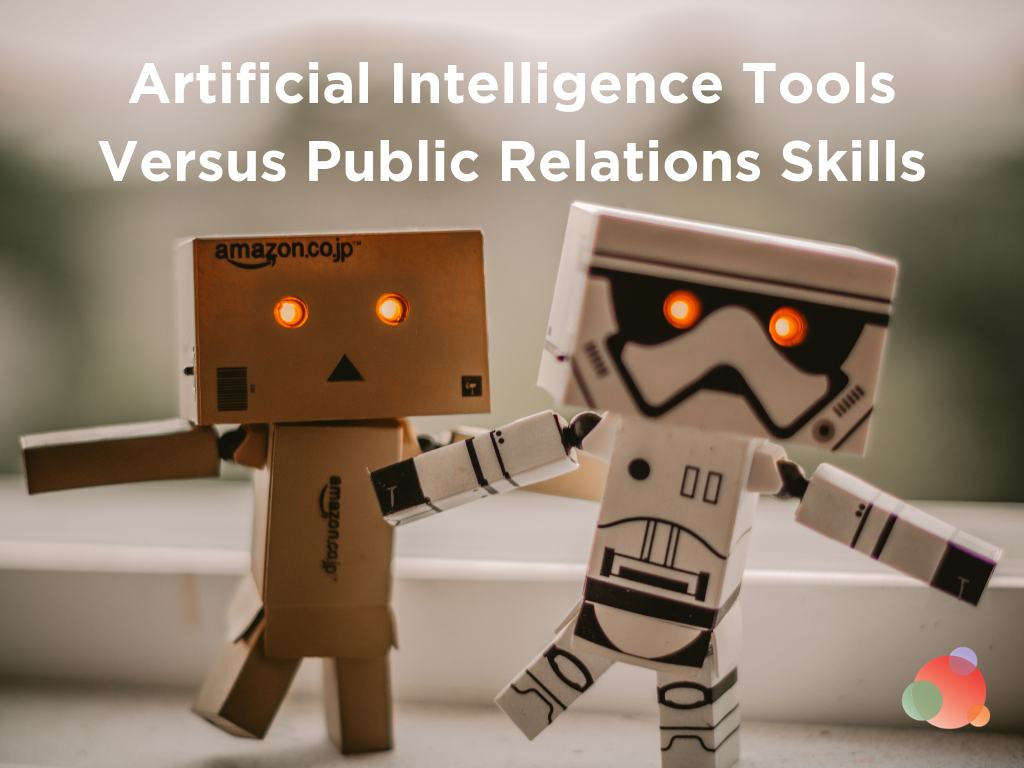 With artificial intelligence, machines are able to process vast amounts of data or perform repetitive tasks better than humans.
With artificial intelligence, machines are able to process vast amounts of data or perform repetitive tasks better than humans.
Show me a body of knowledge, and I’ll show you a machine that can turn it into a dataset.
Yet, many public relations professionals still believe communications is a special case because our work relies on human characteristics, like emotional intelligence, ethics, and interpersonal skills.
Some of us believe machine intelligence will never be able to achieve the same level of sophistication as people.
That’s a misplaced assertion.
In fact, the AI debate is taking place not in the media or public relations industries, but among the computer and data science communities.
Artificial intelligence is here and affecting what we do.
It’s already writing news reports for the Associated Press.
Creating and optimizing ads on Facebook.
It’s even producing content such as the movie, Zone Out.
What we do know, thanks to a study led by Jean Valin on behalf of the CIPR #AIinPR panel, is that right now 12% of public relations skills are assisted or impacted by artificial intelligence.
Machines already undertake tasks such as data analysis, horizon scanning, and data management.
Originally these were performed by practitioners starting out in their careers.
Valin’s work also shows that given the pace of development of software and machine learning, this number is expected to rise to 38% in five years.
By 2023 artificial intelligence will impact key areas of public relations, including stakeholder mapping, risk analysis, auditing, and behavioral analysis.
Will History Repeat Itself?
Our profession doesn’t have a very good track record when it comes to making changes at scale.
Instead, we benefit from the innovation taking place in markets around us, rather than proactively directing research and product development ourselves.
History shows we’re collateral damage to media and technology entrepreneurs.
Think about it.
Google was founded 20 years ago and created an opportunity for a new industry that helped organizations get discovered, and build relationships online.
SEO, or search engine optimization, is a growing area of the digital industry.
Yet, public relations missed the mark because it lacked technical skills.
History repeated itself ten years ago with the emergence of social media.
Platforms like Facebook and Twitter required companies to pay to boost and amplify content in order to increase its reach.
Innovation in Public Relations
Paid social was initially viewed as an ethically murky area for communications pros.
Social media agencies emerged to seize the opportunity.
And it’s only in the last few years that public relations has made inroads into this market.
This is thanks to the integrated PESO model devised by Spin Sucks CEO Gini Dietrich.
Without it, we would still be playing catch up.
Let’s ensure we don’t let the same thing happen with artificial intelligence.
The polarized nature of the discussion around artificial intelligence and the lack of critical thinking is frustrating.
Until very recently, the conversation around AI and PR ranged from denial to techno-panic.
The CIPR #AIinPR panel was established 18 months ago to spark a dialogue and explore the effects of AI on public relations.
And we are conducting research aimed at encouraging PR professionals to take a more proactive approach to technology within your practice.
Which Artificial Intelligence Tools Do You Use?
And now I’d like to ask you a favor.
The CIPR #AIinPR panel is updating its crowdsourced AI tool database.
Tools help us work smarter and more efficiently and the market for technology in marketing and public relations is exploding.
It seems like there’s a tool for every aspect of our work.
The current #AIinPR database consists of around 150 tools characterized by function and application of artificial intelligence.
#AIinPR Survey
We’re asking the Spin Sucks Community to help us by completing a short #AIinPR survey with your recommendations or suggestions.
We welcome submissions from practitioners, agencies, organizations, and vendors.
A member of the #AIinPR panel will check each tool.
We’ll verify the description, function, and the application of AI using a five-point scale:
- Simplification: technology that simplifies a public relations process, or provides a tactical service
- Listening and monitoring: media and social media listening and monitoring tools
- Automation: automation of tactical tasks
- AI for structured data: machine intelligence applied to structured data
- AI for unstructured data: machine intelligence applied to unstructured data
The #AIinPR tool project has its genesis in #PRstack, a crowdsourced list of more than 250 public relations tools and 48 practitioner guides.
Three years ago, a community of practitioners created it by using a similar crowdsourcing approach.
Characterizing the #AIinPR tool market is essential for several important reasons:
- Practitioners will gain an understanding of the tools available and, as a result, work more efficiently and effectively
- Communicators will get a handle on the longer-term impact of tools on workflow and skills
- The database will help debunk vendors that use AI as a shiny marketing label to sell their technology into the public relations market
Have you had experience with AI tools in communications?
Please respond to the #AIinPR survey by September 11, 2019, with your recommendations and any errors and omissions you might find.
Or share your thoughts in the comments below.
Thank you for your involvement!